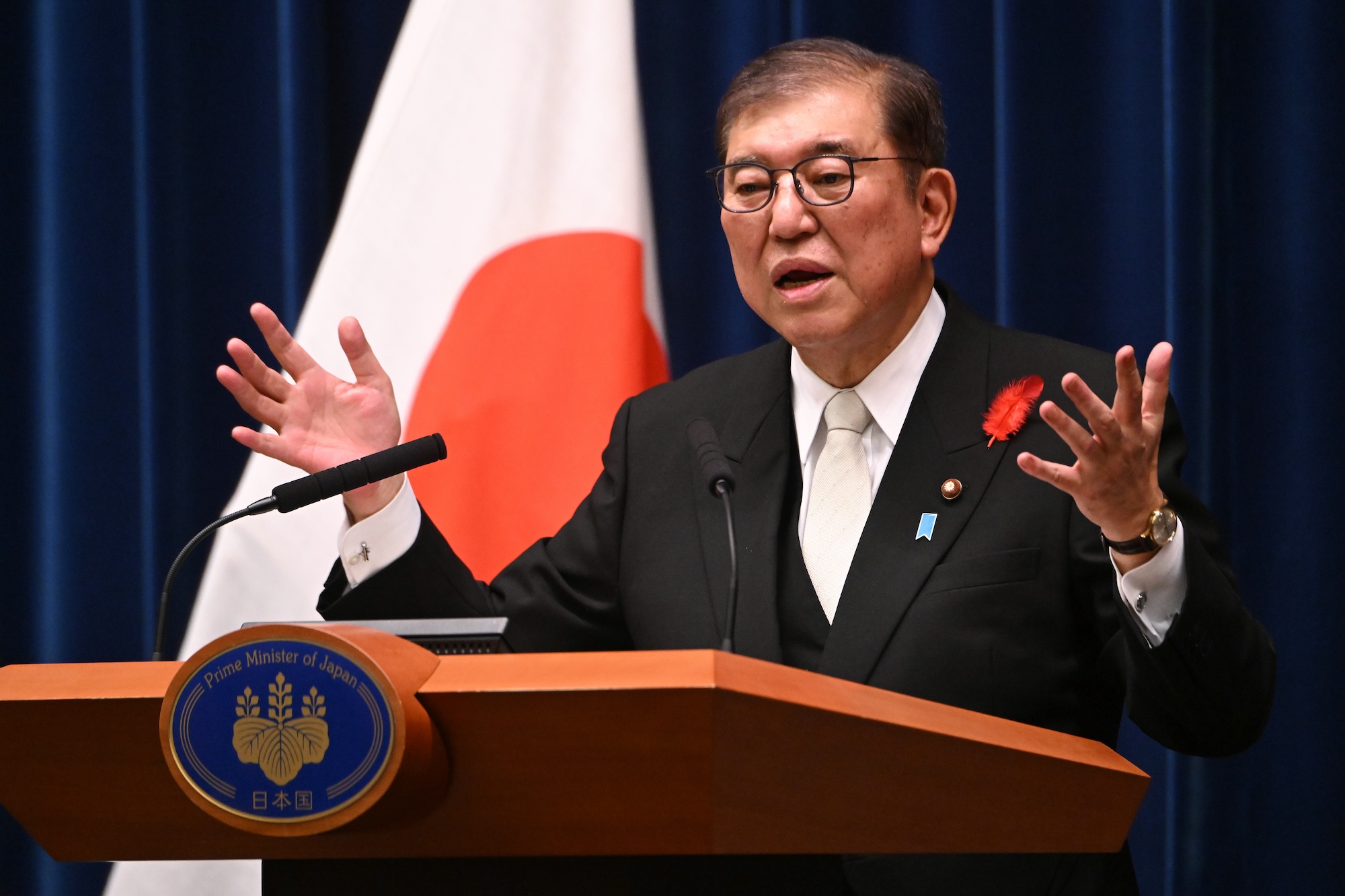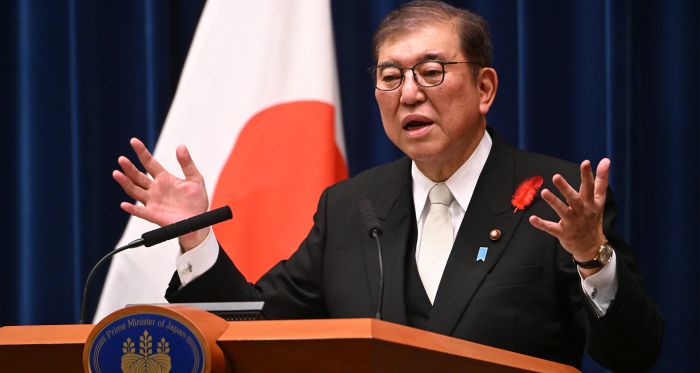The selection of Ishiba Shigeru, who won his party’s leadership race to become Japan’s new prime minister on October 1, reflects the divisions within the ruling Liberal Democratic Party between the centre-right and harder right.
Ishiba’s slim margin of victory over the staunchly conservative Takaichi Sanae in the second round of intra-party voting demonstrates that the LDP is still negotiating internally what kind of party it wishes to be after the death of former prime minister Abe Shinzo, the long-time president of the LDP and another staunch conservative, who served as PM from 2012 to 2020 before his assassination in 2022.
This introspection includes what ideologies inform the basis of its governing and national philosophy, economic policies, and what degree of securitization of foreign policy the members are willing to accept.
Ishiba will not advocate for liberal migration policies, dynamically promoting gender and other forms of equality, or deviating from Japan’s 2022 National Security Strategy.
In fact, Ishiba, a former defence minister, has advocated for the establishment of an Asian NATO and for members of Japan’s Self-Defense Forces, the country’s military, to be stationed in the U.S. He even visited Taiwan prior to the election to highlight the island’s importance to Japan’s security.
Support for Ishiba’s leadership is precarious. During the LDP’s internal election process, it wasn’t until outgoing prime minister Kishida Fumio threw his support behind Ishiba’s candidacy that the latter was able to win a modest victory over conservative favourite Takaichi, a close ally of former prime minister Abe.
Ishiba’s lack of conservative appointments in his cabinet further suggests that he is serious about transforming the LDP's ideological inclination. And by appointing former prime minister Suga Yoshihide as vice-president of the LDP while sidelining Aso Taro from the same role, Ishiba is indicating that he aims to break the influence of the old conservative guard within the LDP and tack to the centre-right.
But this will be difficult. The conservative old guard has never been shy about pressuring sitting prime ministers to step down. To illustrate, between 1997 and 2012, Japan had no less than eight prime ministers
Not so great domestic expectations
On the domestic front, policy continuity is likely in the Ishiba administration. This means policies instituted under Abe, including the so-called three arrows (Abenomics), will be carried over with modest reform. Expect further investment in measures to promote families as Japan’s dire demographic problems remain, and modest migration reform to allow more non-skilled labourers to work in those parts of the Japanese economy that ordinary Japanese citizens won’t. There is also the possibility that Ishiba will normalize same-sex marriage if his prime ministership lasts beyond a year.

There is consensus within the LDP about further investing in economic security and resilience initiatives in the wake of Russia’s invasion of Ukraine, past experiences with economic coercion and hostage diplomacy, and the possible breakdown or weaponization of supply chains. An Ishiba administration is likely to continue to strengthen these signature policies.
Japanese prime ministers have few options to fundamentally transform the country’s socio-economic structure in a short period of time. For example, Abe Shinzo, despite being in power for almost eight years and being a dominant political force in the LDP, couldn’t make significant progress on pension and social welfare reform, digitization, gender equality, or allowing more horizontal and vertical mobility in the labour market.
Ishiba’s past record as a party outsider suggests that he may not be able to accrue support within the party for consequential economic reform to deal with Japan’s many economic and social problems.
Foreign policy opportunities and the limits of a securitized China policy
By including two former defence ministers in his new cabinet, Ishiba is signalling to both party members and Japanese society that he is taking security threats from China, Russia, and North Korea with the utmost seriousness.
However, his proposal for an Asian NATO has been met with skepticism from Washington. The region’s heterogeneity in terms of politics, economics, and security challenges makes this idea untenable, as does the fact that most countries in the region don’t want to choose between China and the U.S.
Over-securitizing Japan-China relations also has limitations. China, which still sees Japan as a source of investment, technology, and human capital development, hosts over 20,000 Japanese small and medium enterprises, and the bilateral trade relationship as of 2023 was approximately US$380 billion. This mutually beneficial trade relationship continues to deepen despite security tensions and public perceptions reaching record-high rates of unfavourability in both countries.
Bolstering Japanese relations with Taiwan, meanwhile, would only provoke Beijing to engage in economic coercion, hostage diplomacy or other tactics to convey to an Ishiba administration that deviating from the One-China Policy is the reddest of red lines.
However, Ishiba may find other room to manoeuvre in the foreign policy domain. Examples include investing in existing partnerships such as the Japan-U.S. alliance; the reciprocal access agreements (RAA) with Australia, the U.K., and the Philippines; the Quadrilateral Security Dialogue; expanding CPTPP membership; and investing in existing and new minilateral arrangements.
Many countries view Japan as an international ‘adapter’ and middle power that helps countries connect with each other and with associations in the Indo-Pacific. To illustrate, with the CPTPP, Japan was indispensable in bringing together developed and developing economies to forge this 21st-century trade agreement.
Japan has also used the Quad and minilateral partnerships between the Philippines, the U.S., and Japan to engage in infrastructure and connectivity initiatives, technology transfers, and other projects.
Ishiba, while working with allies and partners, can expand the scope of Japan’s international co-operation. For example, he could offer to work with Canada, the Philippines, Vietnam, and Indonesia on Illegal, Unregulated and Undocumented (IUU) fishing. In trade, he could advocate for CPTPP expansion with new members, including South Korea, Thailand, the Philippines, and even China and Taiwan.
In the area of combating disinformation, Ishiba could find a way to work with partners that are on the forefront of dealing with this global challenge by offering to form a non-state-level consortium of research institutes or organizations specifically focused on identifying, mitigating, combating, and vaccinating our societies against disinformation.
Intra-party challenges will determine PM Ishiba’s longevity
The challenge for Ishiba is that while he may be a new face, he has, at best, only a marginal base of support within the LDP. Without a broader base, he will find it difficult to formulate and implement policies, especially against the backdrop of intra-party opposition from more conservative politicians.
Prime Minister Ishiba has called for a general election on October 27, 2024. This election will be critical to the longevity of his prime ministership. A weak LDP showing could reflect poorly on Ishiba’s attractiveness as a leader and on the cabinet he has assembled. If the LDP under-performs, Ishiba’s political adversaries will try to replace him. If the party is successful, Ishiba may win some time and earn some political capital to spend on some of his campaign pledges.
Why this matters for Canada
What happens in Japan matters for Canada. It is a major trading partner and a priority partner in Canada’s Indo-Pacific Strategy. With its bilateral relations with India and China less than ideal, Canada can ill afford Japan falling into another cycle of rotating or weak prime ministers. In preparation for that possibility, Ottawa should seek to insulate its lines of co-operation at the institutional level. This will require more military-to-military, parliamentarian-to-parliamentarian, and business-to-business exchanges. Ottawa could also work with the new Japanese leadership on initiatives that accrue political capital in both Tokyo and Ottawa, such as expanding the CPTPP, working together in lobbying the U.S. post-2024 presidential elections, and more.
• Edited by Erin Williams, Senior Program Manager, and Vina Nadjibulla, Vice-President Research & Strategy, APF Canada.





